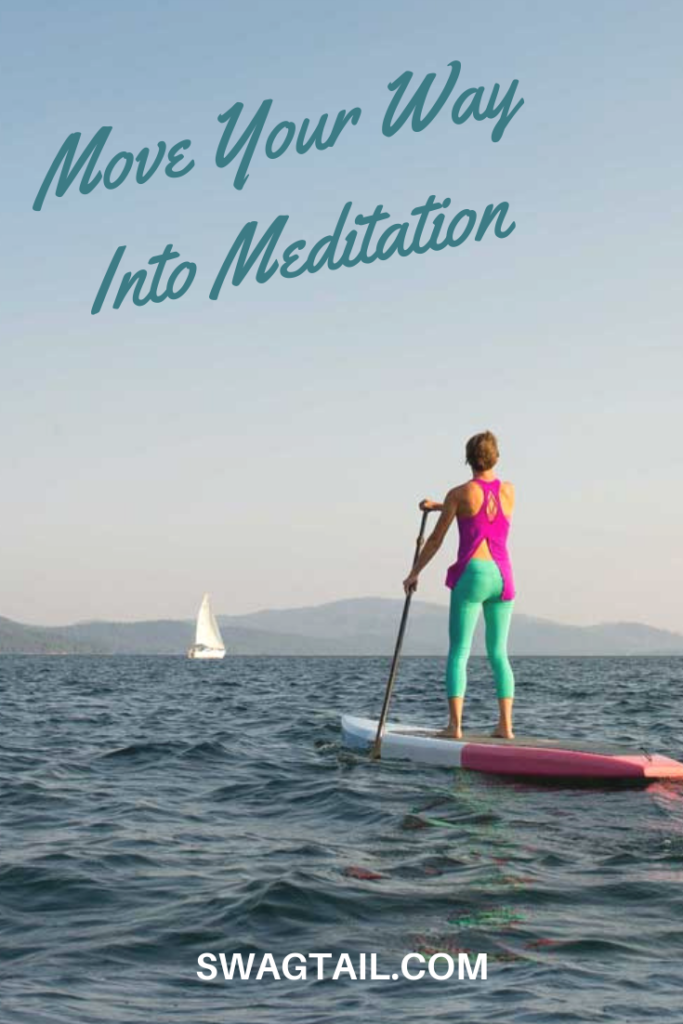 The heart of the yogic paradigm is that we, as humans, are part of an infinite, intelligent, and evolving universe. In fact, our true self mirrors that unending field of possibility. You are abundantly creative and you are powerful beyond measure. Meditation allows you to tap into these aspects of your true self. And, moving your body is one of the best ways to do so.
The heart of the yogic paradigm is that we, as humans, are part of an infinite, intelligent, and evolving universe. In fact, our true self mirrors that unending field of possibility. You are abundantly creative and you are powerful beyond measure. Meditation allows you to tap into these aspects of your true self. And, moving your body is one of the best ways to do so.
I experienced this last week on the golf course, of all places. It was a sunny and 75-degree morning in the mountains without a cloud to taint the turquoise sky. My head was a bit fuzzy since I didn’t sleep much the night before, but I felt relaxed and ready to play. Each swing of the club felt effortless. My tempo was smooth, and it was easy to connect with the ball.
As we moved through the front nine, various bird sounds filled my ears. The emerald green grass contrasted the dark evergreen trees and bright sky. It was though I just floated through the course. Then, without much notice, I had shot a 37 — my best score to date on any beginning half of a course (and I didn’t even use force to make it happen).
The feeling of connection and flow experienced on the golf course is one often described by those who sit to meditate. I also notice these same sensations arise when paddling on our serene mountain lake, watching the ocean waves, or even moving through sun salutations on my mat. You, too, can move your way into meditation. This post shows you how.
Photo Credit: Diane Nicole Photography
WHAT IS MEDITATION?
While the definition of meditation varies from person to person, we explain meditation is any activity that creates present moment awareness and joy. It can be described as a practice that teaches us to tap into the loving, dynamic and non-physical aspects of our soul.
This blissful state, also known as Samadhi, was the goal of the 8-limbed path outlined by Patanjali so many years ago. His theory was that it would be easier to calm the mind and access our spiritual nature once the material senses were controlled.
While Patanjali focused on the meditative state as a mental form of yoga, the tantric approach encourages the experience of Samadhi through everyday activities and interactions. Tantra yoga is founded upon the belief that everything in the Universe is an expression of the divine. Thus, each moment offers you a doorway through which to connect with your true self.

Photo Credit: Shane Stagner
BENEFITS OF MEDITATION
While a meditative state can occur naturally through a variety of channels, you can also aim to experience it more often by using it as a meaningful ritual in your daily life. 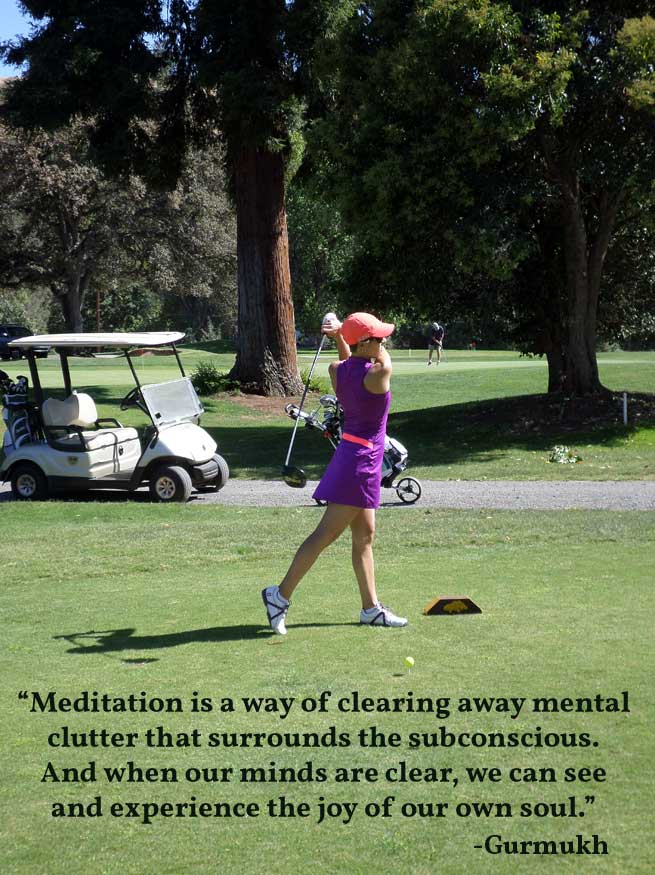 Recent scientific studies have shown that regular meditators have higher levels of self-esteem, personal clarity, and overall life-energy.
Recent scientific studies have shown that regular meditators have higher levels of self-esteem, personal clarity, and overall life-energy.
Studies also reveal that meditation:
- Improves the quality of life
- Increases creativity
- Develops intuition
- Enhances productivity
- Initiates, and amplifies, alignment
- Decreases stress
- Alleviates pain
- Reduces depression, and
- Minimizes sleep disturbances
When you experience the positive benefits above, even greater benefits can occur. This includes:
- More love flowing into your experience
- Greater feelings of worthiness
- The ability to see new opportunities as they arise
- Readiness for perfect timing, and
- Greater clarity of who you are and where you are going
COMPONENTS OF MEDITATION
Whether explore meditation through movement or stillness, there are three basic components of meditation:
Focused Attention
To help bring the mind into the present moment, it’s helpful to train it to focus on one thing at a time. Said another way, a meditation practice develops the ability to hold uninterrupted concentration. You can focus on any one thing at a time during meditation to accomplish this. It could be your breath, it could be a consistent and low sound in the room, it might even be sensations in the body. Tuning in to these single points builds focused attention that can then be used in various other tasks in your life.
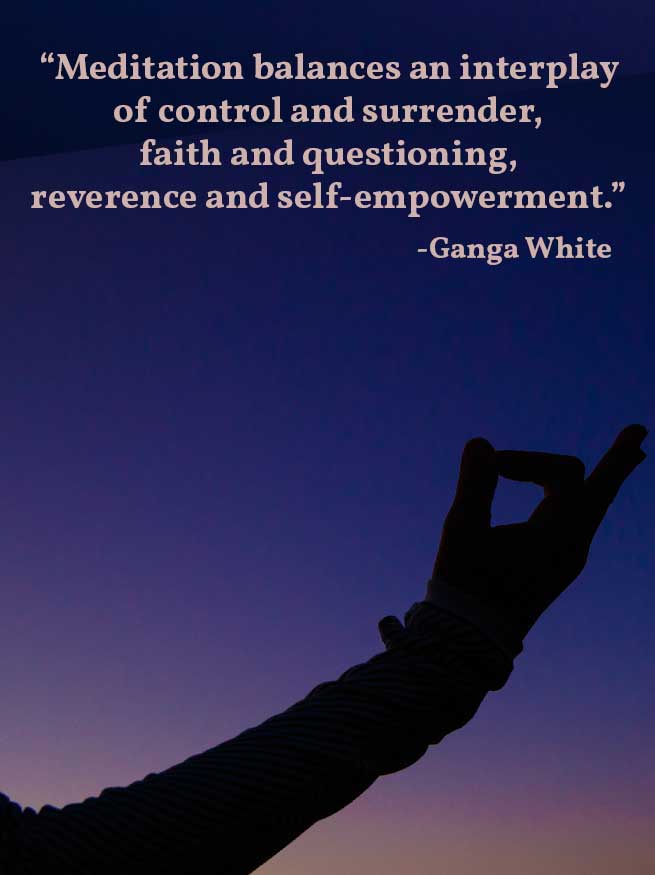 Heightened Awareness
Heightened Awareness
While meditation does train you to focus on one thing at a time, the mind is a thought-generating organism that constantly communicates with every cell of the body. Meditation heightens your awareness of your thoughts, which can naturally wander from your focal point. Any body sensations can also want to grab your attention. In any case, mediation increases your level of awareness so that you are not defined by your thoughts and sensations, but able to direct your focus consciously to any point you choose. And, you can use those feedback tools to help guide you to make decisions that support your best and highest good.
A Sense of Detachment
Because meditation trains you to be aware of your thoughts, emotions and body sensations, a sense of detachment from those aspects of yourself is created. Meditation teaches you that you are far more than your body or mind, but they are just portions of who you really are. Similarly, during the day you may play many roles, such as a teacher, student, spouse, partner, parent, or sibling. But each of those characteristics are just one aspect of you. Through a sense of detachment, you are able to release any one component of your identity and open to the eternal aspect of your soul.
Photo Credit: Casey Brooke Photography
5 WAYS TO MOVE INTO MEDITATION
The three components of meditation above are easily covered in the physical aspect of a yoga practice. You shift your attention from outside of the yoga shala to your body moving on the mat. When you remove those distractions, you are able to listen clearly to the instructor and your body. And, through conscious actions and purposeful breathing, you may experience a flow state in which you are more than just your body.
Essentially, a moving meditation involves physical movements of the body to focus the mind. You may already include meditative rituals into your day-to-day activities already. Below are five ways you can do so on your own, or when you are leading others
(1) Use repetition of movement
Pairing the breath and movement is one of the most fundamental aspects of hatha yoga. Yet, when you use repetitive movement, the mind can focus less on the movement and more on the flow of prana in their being. Take a simple sequence where you:
- Start in child’s pose
- Inhale to cow pose
- Exhale to cat pose
- Inhale to a neutral table top
- Exhale to down dog
- Inhale to plank
- Exhale, drop the knees and return to child’s pose
- Then repeat
This might be a familiar set of poses, but repeating these movements for 2-3 minutes can allow students to shift their perspective in the experience.
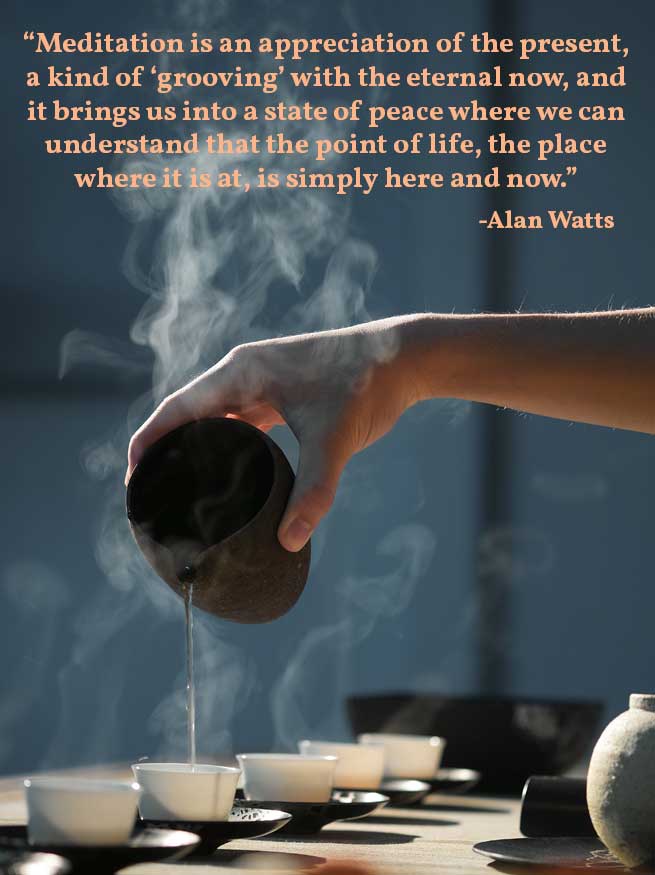 (2) Move in slow motion
(2) Move in slow motion
When you change the pace at which a posture is taken during class, you alter the experience for your students. Try having them slow down the movements as though they were gliding through a water. Doing this, just like in Tai Chi, allows for greater focus on body alignment. This leads to enhanced balance, coordination, and general awareness of the body.
For example, have your students start in warrior 2. Then, You cue them to use 3 to 5 rounds of breath to bring their top arm overhead for reverse warrior. Then, you could instruct them to come out of the pose in the same, slower fashion.
(3) Add kumbhaka to sun salutations
Khumbhaka involves lightly holding the breath during the natural pause that occurs between both the inhale and the exhale. It’s part of a pranayama practice, and can also be woven into sun salutations for more seasoned practitioners. To do this, cue your class through traditional surya namaskara A, B, or C. Then, at the pauses between each pose, add a count of 1 to encourage holding the breath. You can lengthen that pause to a count of 2 during the second round, and even to a count of 3 during the third round.
For example:
- Inhale to urdva hastasana. Hold , and count to 1.
- Exhale to uttanasana. Hold , and count to 1.
- Inhale to uttitha uttanasana. Hold , and count to 1.
- And so on throughout the sequence.
Essentially this means students will hold poses slightly longer to account for the breath retention.
(4) Match a mantra with your mudra
One fantastic tool to help students focus their mind during the first part of Savasana is the SA TA NA MA mantra. This mantra connects us to the primal existence of life. To teach in class, get your students situated in their final resting pose. Then have them start this repetitive sequence:
- Step 1: Inhale and touch the tip of their thumb to the tip of their forefinger. As they exhale, say the word SA silently. SA represents infinity.
- Step 2: Inhale and touch the tip of their thumb to the tip of their middle finger. As they exhale, repeat the phrase TA silently. TA equates to the creative aspects of life that arise from that space of infinite possibility.
- Step 3: Inhale and touch the tip of their thumb to the tip of their ring finger. As they exhale, say the word NA to yourself. NA is the aspect of life we experience via death, change, and transformation.
- Step 4: Inhale and touch the tip of their thumb to the tip of their pinky finger. As they exhale, say the word MA to yourself. MA indicates rebirth and regeneration.
Thus, the entire cycle of life is addressed in just a few, powerful syllables. And, the repetition of the movement allows the mind to focus and the body to relax.
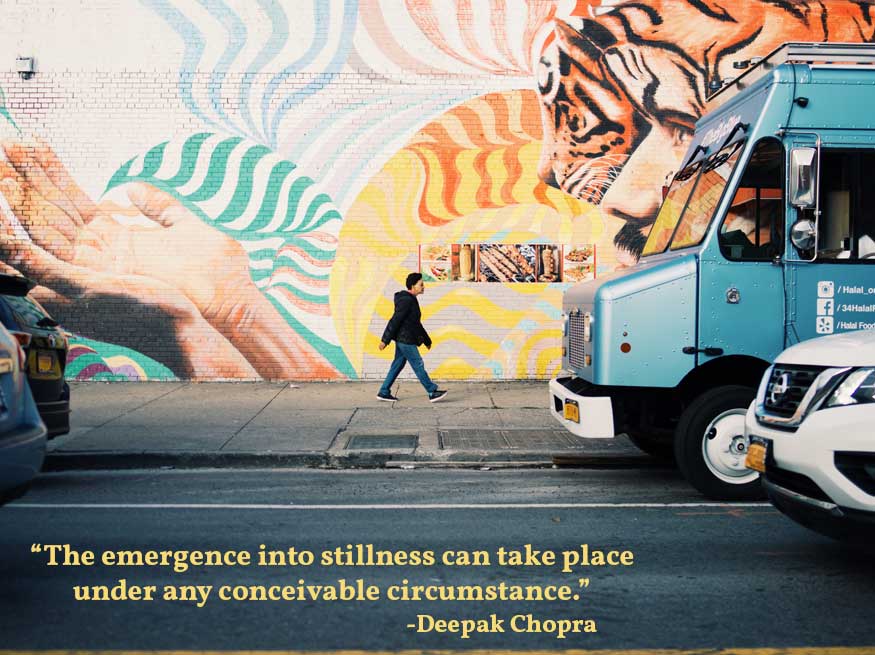
(5) Add moving meditations to a workshop or retreat
If you’re teaching a yoga retreat or a weekend workshop, you could add in some moving meditation techniques other than asana. This could include:
- Walking a labyrinth
- Hosting a kirtan
- Exploring Tai Chi or Qigong
- Free Movement dancing, or even
- Taste-testing food blindfolded during meals (just like in the movie Hereafter at the cooking class)
There are endless ways to use your surroundings to increase awareness and joy in the moment. This is especially true when students have carved out time and energy for a retreat or workshop. So make the most of it!
Photo Credits: Oriento and Nathalia Segato
PUTTING IT TOGETHER
Moving meditation is an activity that anchors you in the present moment and elicits feelings of joy and expansion. While you can encounter this state naturally, it can also be cultivated through daily choices and habits. One of the most powerful ways to do this is through movement of the body. You often do this through your physical practice of yoga, and you can share the ideas above with your students in class as well. Through movement, you can achieve the same heightened levels of well-being, connection, and power.
In what ways do you tap into an active meditative state? Do you have a story where you felt part of the flow of life? Effortless in action? Please share your experiences with us below!




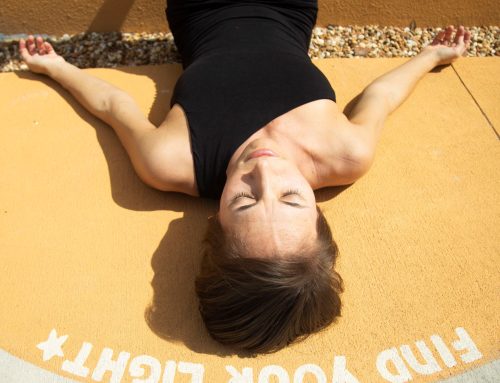

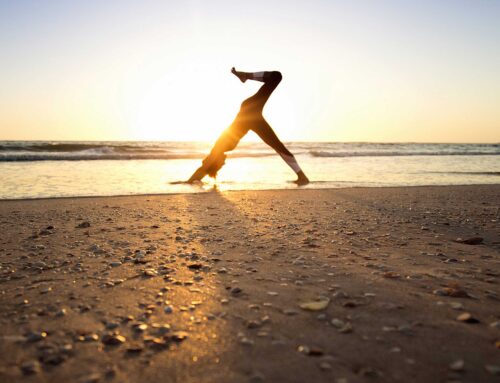
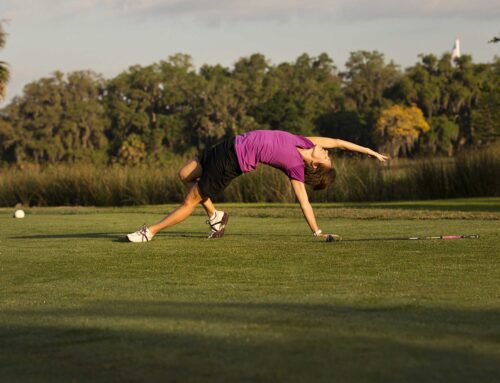
Hi there! Such a great article, thank you!
Thanks for the feedback, and glad you enjoyed it!